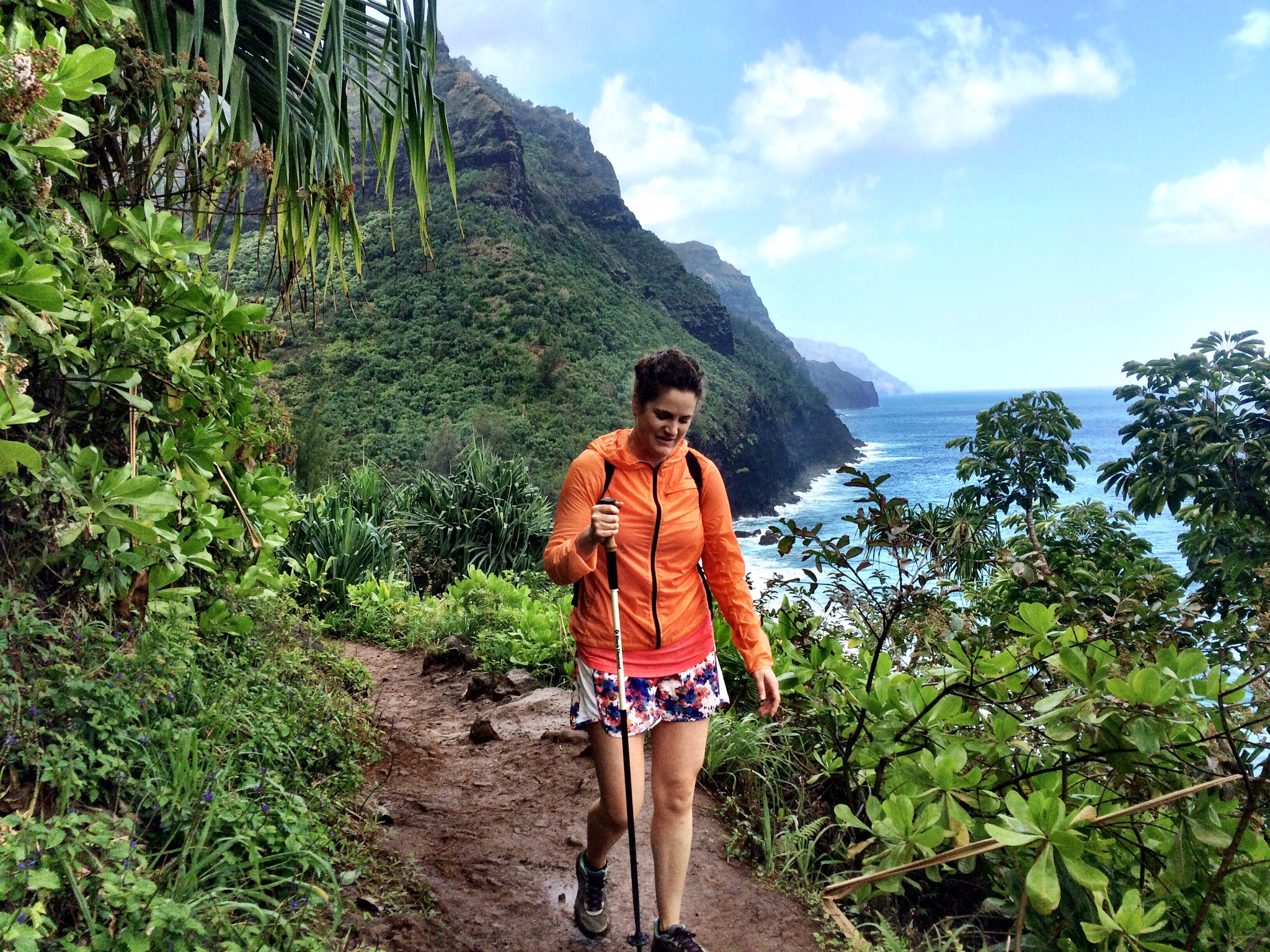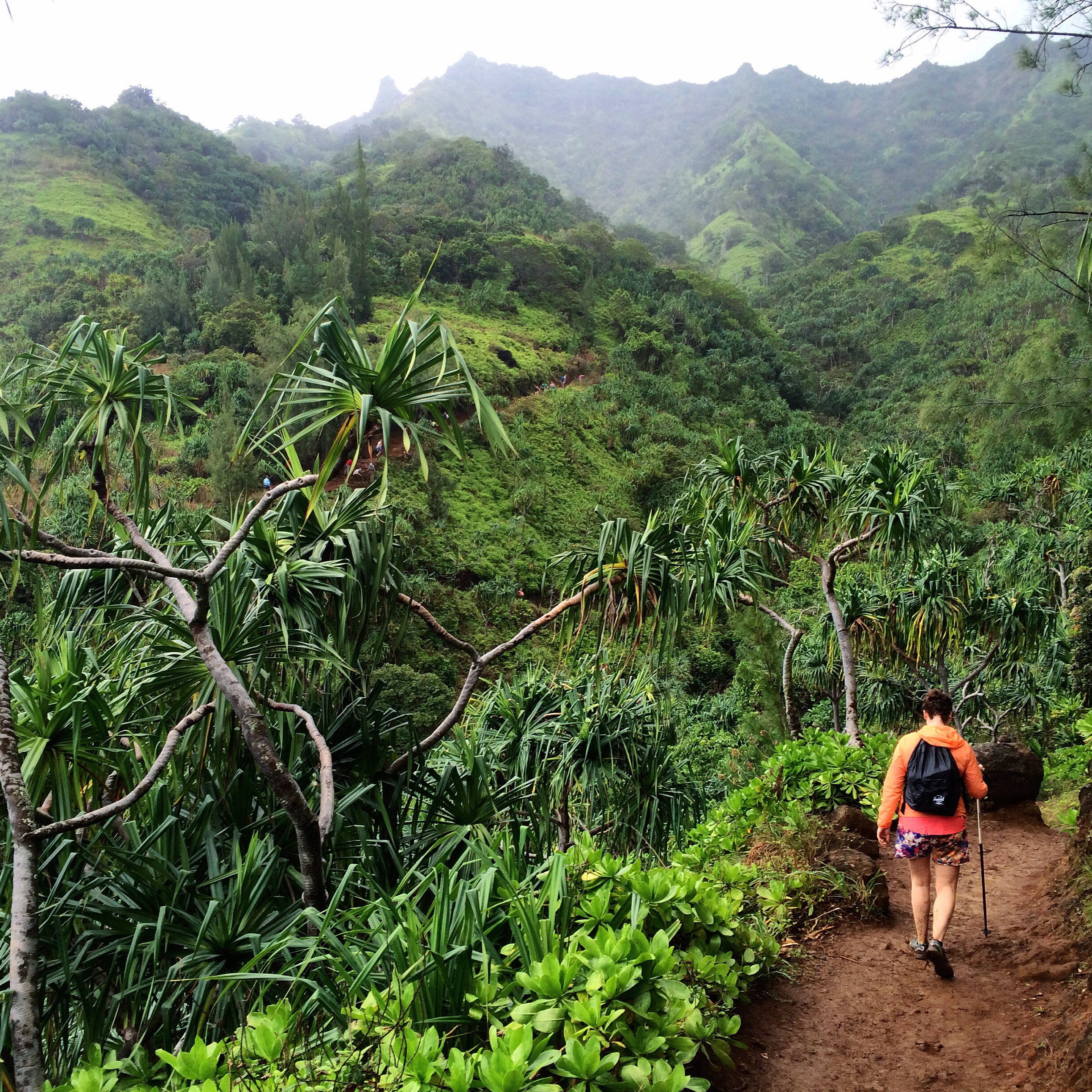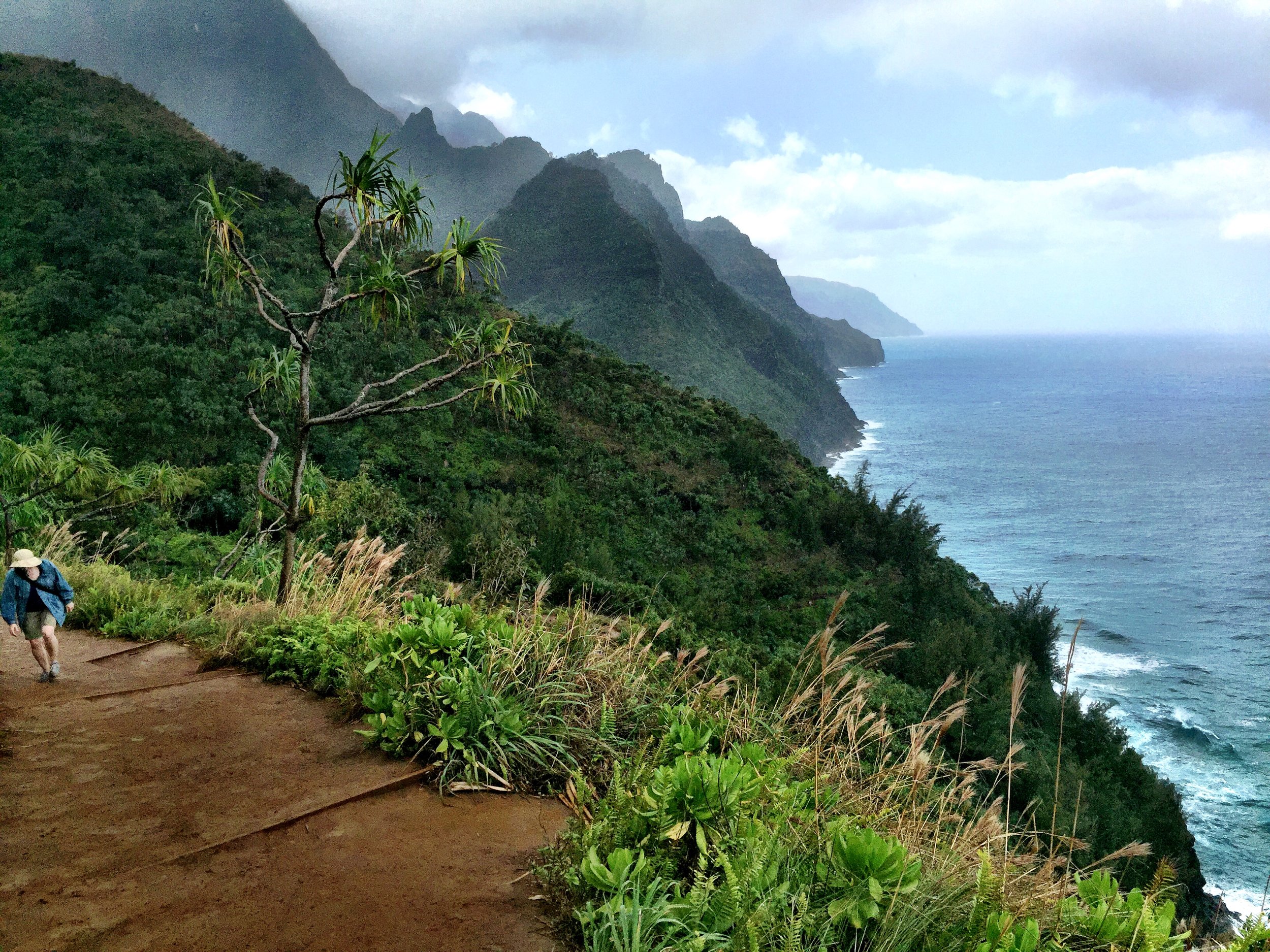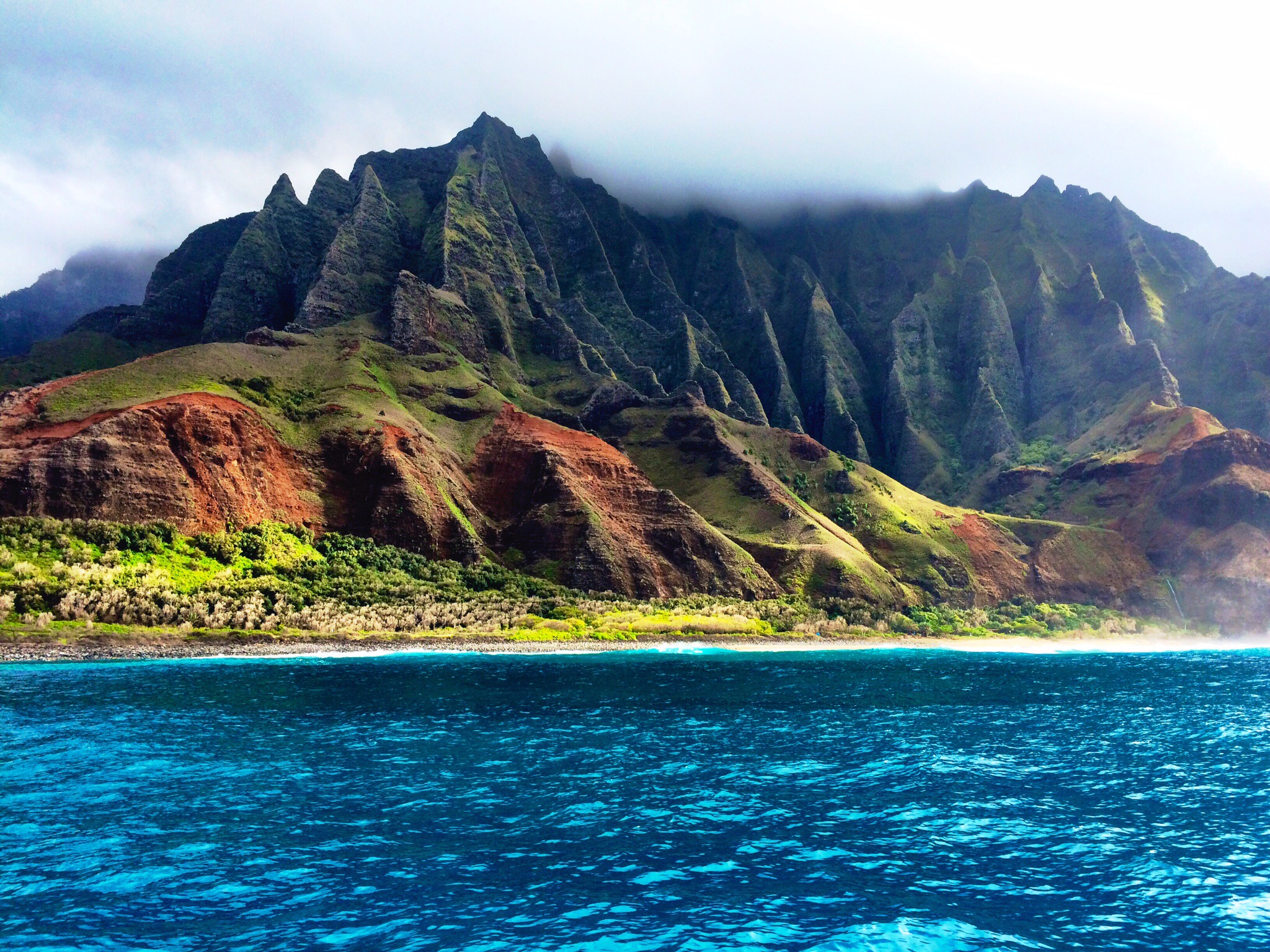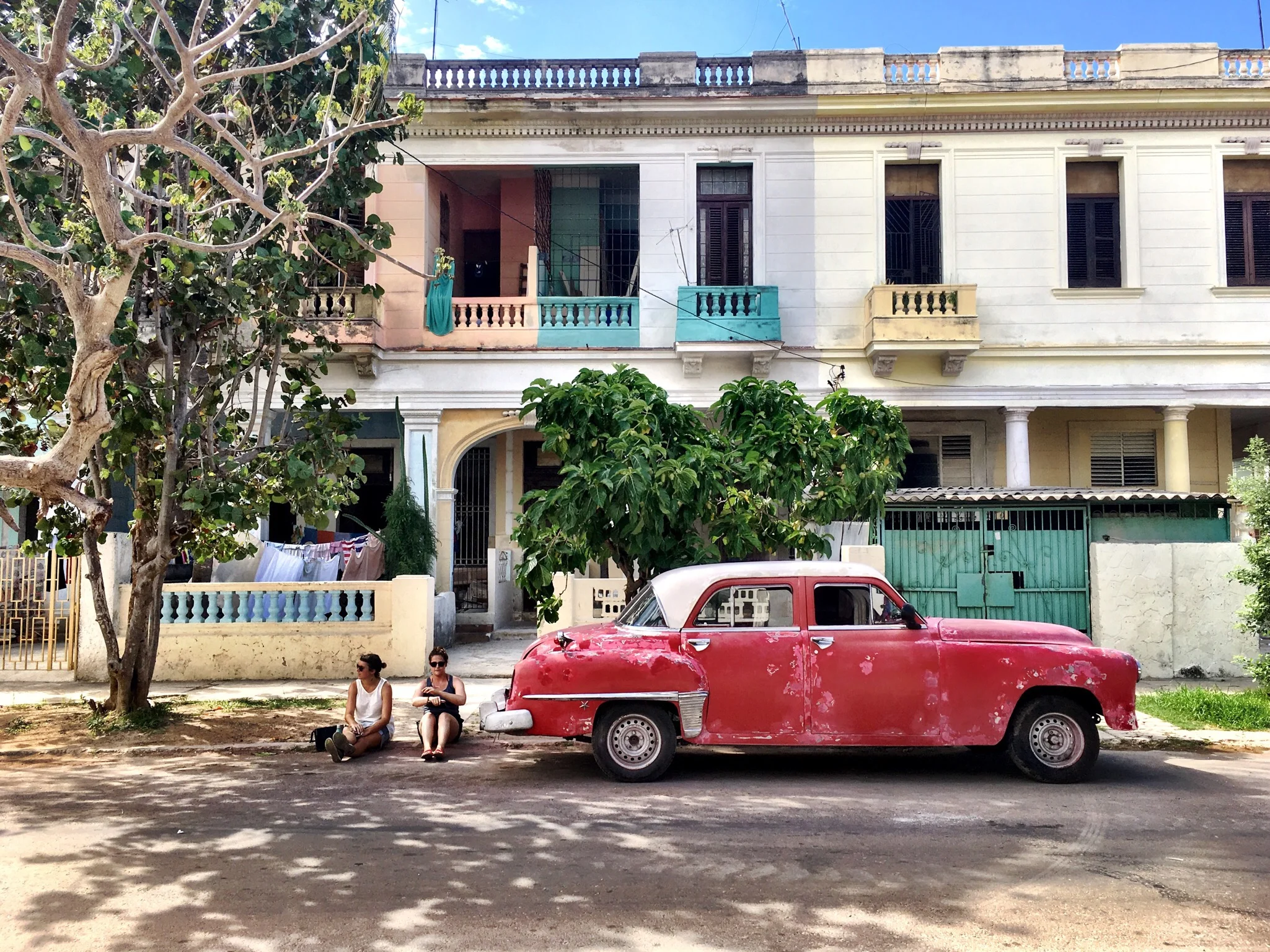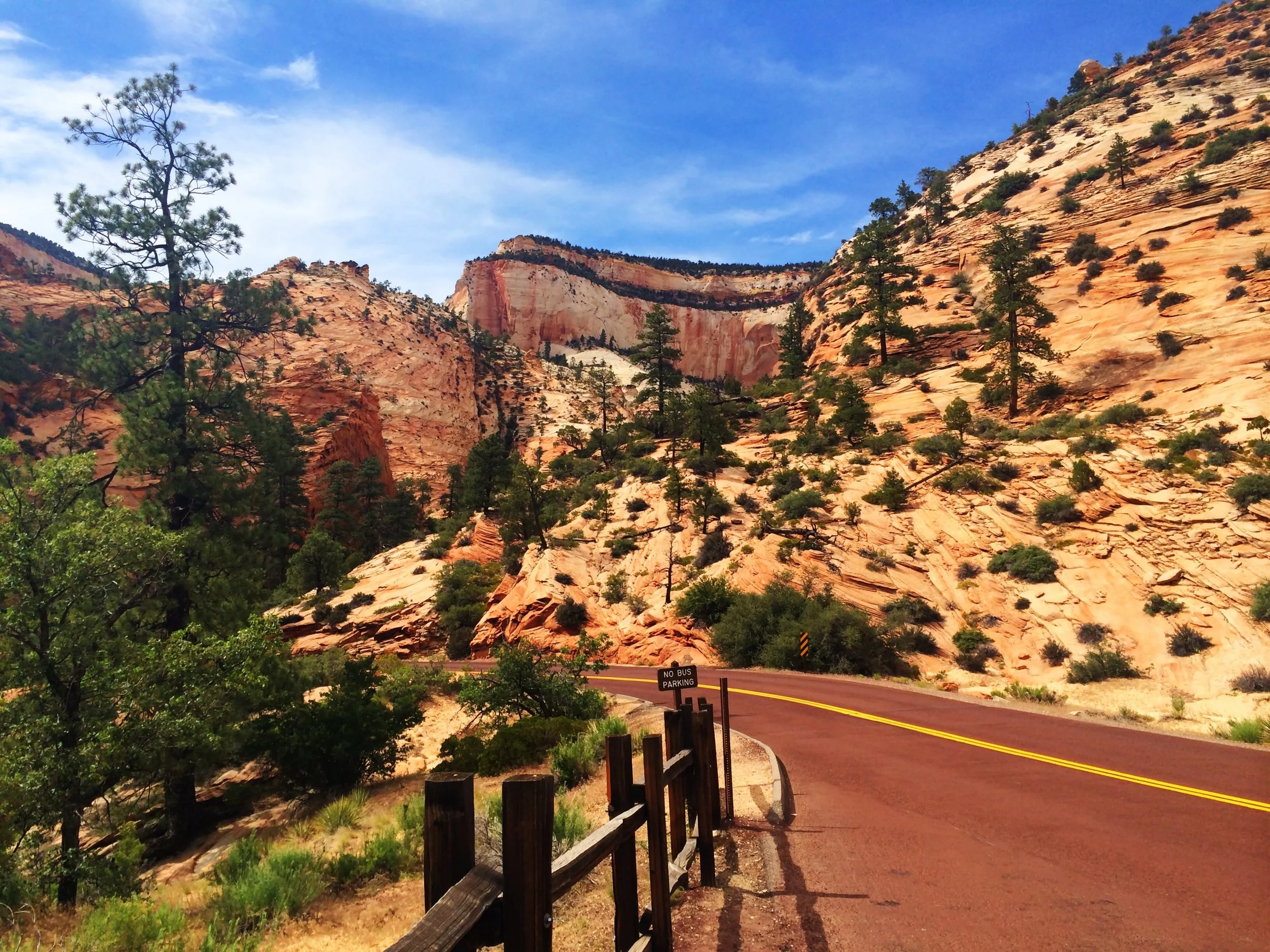Kauai | March 2016
IN FLIGHT
Travel time: 17 hours, 5 minutes (SFO to LAX to LIH, palindromically)
Miles covered: 5,896 (roundtrip)
Movies consumed: almost 3 (Pitch Perfect 2, Creed, Sleeping with Other People)
Hours slept: maybe three on the return
POST FLIGHT
Travel time: 5 days
Miles covered: 21 (on foot)
Beaches frequented: seven
Banana Joe’s frostys consumed: three
Prologue:
After extensively trotting the globe, I wanted nothing more than time spent relaxing on some beach, fruity drink in hand, tanning my base while perfect turquoise water laps at the shore. Despite the Hawaiian Island of Kauai upholding its end of said bargain, this was not that trip. It was so much more.
Kauai is the land of promise, assuring paradise and adventure and solitude. It vows respite from the rigors of daily life and escape from the constraint of schedules. Its inhabitants, and as a result its guests, operate on island time, which is fantastic when you are taking in the scenery, but less so when ordering your morning coffee. There is no sense of urgency, no rushing about. When you occupy one of the most beautiful places on earth, you are always right where you should be. This is a way of life that I am unfamiliar with. But I could get used to it.
In fact, a great many things have adapted to Hawaii’s culture, climate, and geology. Thousands of wild chickens have come to call Kauai their home. These chickens haven’t just crossed the road; they are overtaking parking lots and beaches and plantations. They originated from the initial Polynesian settlers, who brought them as a food source. When Hurricane Iniki tore through the island in 1992, the domesticated chickens escaped their destroyed coops. And with few natural predators (the mongoose was never introduced to Kauai as it has been on other Hawaiian Islands) to manage their population, they have been multiplying exponentially. The genetically redundant offspring of the domesticated hens and wild roosters, confusedly crowing during all hours of the day, are just one more representation of Kauai’s unique construct of time.
Kauai is the geologically oldest (approximately 6 million years old) and fourth largest Hawaiian island. Its origins are volcanic, forming a nearly perfect circle with Hanalei Bay and the iconic Napali Coast on the north shore and Poipu to the south. Whether summer, spring, winter or fall, the weather in Hawaii is always unpredictable. Generally, the western side of Kauai is sunnier and drier. The north shore is wetter and more lush, often cited as being the wettest spot on earth. There is just one main road along the coast from Haena State Park to Koke’e, transitioning from Route 50 to 56 to 560. The route takes about two and a half hours (depending on traffic) to “circle” the island. Bear in mind that it is impossible to drive through the Napali Coast, and much of the exotic landscape is virtually inaccessible. Those rugged green peaks, sheer cliffs, and valleys are best seen by foot, chopper or catamaran. Kayakers exploring the cliffs should stay with an experienced guide, as the currents are strong and the beaches difficult to land on.
We decided to find accommodations in Wailua, the southeast part of the island with more hospitable weather. We found a comfortable condo on airbnb. The location was central to everywhere we wanted to go – about an hour drive to Hanalei, and slightly more driving east to Waimea Canyon and Koke’e State Park. Hanalei is a very cute and fun part of the island, presumably a great place to stay; however, it tends to be rainier and is as far from the northwest side as you can get. You will require a rental car to properly navigate the island. I’ve never seen so many Mustang convertibles outside of television commercials! We went with a more rugged, less conspicuous SUV.
Upon arriving at the open air airport, we board a shuttle for the rental car offices. The line is impossibly long, with just two employees both operating on island time. We finally get our vehicle. Luckily, the condo is only 15 minutes from the airport. By now it is midnight, but it feels like 2:00 a.m. The Hawaiian islands are steeped in spiritual and mythological traditions. The state does not, however, believe in Daylight Savings Time. Kauai is two hours behind California when we land, and will be three only after we spring ahead on Sunday. We settle in and try to get some sleep, excited to get a proper look at our surroundings with fresh eyes and the light of day.
Chapter One:
We begin the day slowly – per the physics of the island – with coffee and pastries at Passion Bakery Cafe. The day is overcast and pleasant and quite humid. We’ve chosen the Kuilau Ridge Trail specifically for its close proximity to our condo and relatively flat terrain. This is a great trail for families – kid and parent friendly! The trail is beautiful with great views and few visitors. There is an expansive grassy area with picnic tables about one mile in. We walk for two miles, to a eucalyptus forest, before turning around and hiking out the same way we came. If you continue north on descending switchbacks, you will meet the Moalepe Trail (2.25 miles one way). Both of these easy hikes are among the most visually rewarding on the island. The trails do not complete a circuit so you must retrace your steps (8.5 miles round trip). The trail can be found along State Highway 580 at mile marker 7. There is a small turnout on the right side, with parking for about four cars, and a sign indicating you have arrived.
After the hike, we stop at the Safeway grocery store in Wailua to stock up on food and drinks for the week. (The tap water is potable.) Packing lunches and preparing dinners is an effective way to visit Hawaii on a shoestring budget. The other is by exploring and enjoying nature, which is likely the reason for your visit in the first place. The best things in life are free. And despite tourism representing the state’s industrial boon, that still rings true in Kauai. None of the parks or hikes charge for parking or entrance fees. After packing lunches, we could spend an entire perfect day outside, taking in the sights and kicking in our endorphins, with our flushed wallets being none the wiser.
This afternoon and evening, we had scheduled a sunset catamaran dinner cruise to the Napali Coast. Around noon, we learned that the cruise was cancelled as a result of strong winds up north. We reschedule for Monday night, our last night in Kauai. Also the day with the most promising forecast.
Now with our whole afternoon ahead of us, we drive north along Highway 56 (Kuhio Highway) to explore Hanalei Bay. Journeying around the island is a destination in itself. We drive through downtown Kapaa, past Kealia Beach. The highway is just two lanes, often clogged with drivers leisurely enjoying the scenic route. We cross over narrow bridges where only one car can pass at a time. Cross traffic must wait at the other side. Standard etiquette is to let 5-7 cars through, before changing directions. Throw out a shaka or hang ten sign to show gratitude to cars idling on the other end. Stands selling eggs, fresh coconut water and fruit, snorkels and masks, and surf lessons are set up along the road. We hike the short path to Queen’s Bath in Princeville. The tide is coming in, bringing waves violently crashing against the rocky shore. We cautiously explore. Someone died there just last week, overtaken by a stealth wave. Given the current conditions, it is hard for me to imagine, but apparently during the summer, the calm water and craggy coast creates a regal swimming hole. Thus, giving the locale its name. Princeville is the bougiest area on the island. All golf courses and landscaping and luxury accommodations. Also home to the St. Regis Hotel. Hideaways (Kenomene) Beach in Princeville isn’t so hidden these days, but still a great spot to visit. To get there, you must hike down a steep, rocky path. In close proximity to Pu’u Poa Reef, snorkeling is best when the tide is in, otherwise the water is too shallow in places. It is also accessible by kayak from Hanalei.
Hanalei Bay is the quintessential beach town, nestled in between lush volcanic ridges. The main street (aka a slowed down Kuhio Highway) is lined with shops and restaurants and beach cruisers. Three beach parks are located in Hanalei Bay, each with restrooms, parking, and showers. The half-moon shaped shore stretches for two miles, a perfect place for a relaxing morning walk or jog. Black Pot Beach Park is the site of the iconic pier. The former Hanalei Landing stretches 300 feet offshore into the ocean, disappearing into the horizon and the imposing cliffs beyond. Summer offers a mild surf break for novices. There are huge waves in winter when storms are more common and less predictable. Experienced surfers may seek out large waves at a reef on the right side of the bay.
Tunnels Beach is known as a good snorkeling spot. The secluded beach is tough to find (it took us a couple passes), but the reefs and fish are not. Take Kuhio Highway to mile marker 8. Park along the little side street, then follow the path to the beach.
Just a few more miles down the road, at the end of Kuhio Highway, we encounter Haena Beach Park, where lush tropical jungle meets white sand and blue waters. Mount Makana (Bali Hai) looms large above Haena Beach and offers a spectacular backdrop for sunsets and photos. The Maniniholo dry cave is right across the street. This beach is good for swimming, snorkeling, surfing, shell collecting, spectating sunsets, and just relaxing. It was fun to stop and watch the daring local surfers shred. This beach has a lifeguard station, restrooms, showers, and campsites (permit only).
Downtown Hanalei is an idyllic watering hole: Bar Acuda (tapas and fun bar scene), Postcards Cafe (wasabi crusted ahi) and Hanalei Coffee Roasters (outdoor patio seating) to name a few. Fans of Alexander Payne may recognize the town of Hanalei and Tahiti Nui Bar, in particular, from The Descendants. Huge, stilted homes line the side streets. It looks like a perfect place to stay, paradise found, but a little out of the way for our purposes.
The Dolphin Restaurant in Hanalei also features an unassuming fish market (enter from parking lot), specializing in and selling fresh fish and sushi rolls. The traditionally prepared poke is an expensive extravagance at $20 per pound, but well worth it. A little goes a long way. A pair of ½ pound poke servings was a filling snack for the four of us. We stop at Banana Joe’s in Kilauea on the way back. The small roadside stand sells fresh fruit and vegetables, in addition to fruit smoothies, frostys and other tasty treats. A deserted oasis of desserts.
Given Kauai’s overwhelming beauty and photogenicism, it is not surprising that many movies have been set and filmed on the island over the years. Both the island, specifically, and Hollywood films, generally, have become stand-ins for and representations of this unrealistic and unsustainable ideal of beauty and perfection. They trade on the suggestion of unattainability, presenting viewers and visitors with something they know well enough to want, something that remains just out of reach. To my mind (and obviously I am a repeat offender and one of its detractors), one valid criticism of Hawaii is the widespread tourism. The islands’ offerings are assembled and packaged like an all-inclusive vacation to Disneyworld. One has the feeling of being just one more in a mass pilgrimage to the promised land. The disheartening feeling that maybe there is nothing left to explore. I prefer my islands a little more deserted, more untamed and elusive. “A little fantastic and fleeting and ultimately out of reach.” Yet somehow, amidst the tours and souvenir tees, Kauai manages to maintain its charm. Sure, there are overcrowded beach parks and overpriced indistinguishable resorts, but there are also hidden treasures, peace and quiet, and some of the most beautiful natural wonders and coastlines these eyes have ever seen.
Chapter Two:
Today, my sister and I head north to hike the Napali Coast via Kalalau Trail. Without a permit, you are allowed to hike two miles to Hanakapi’ai Beach and another two to Hanakapi’ai Falls. You need a permit to hike the entire Kalalau Trail spanning 22 miles (round trip). There is a campsite on Kalalau Beach at the opposite end. Most permitted backpackers hike 11 miles in, camp overnight on Kalalau Beach, and hike out the next day. The permits only last 24 hours. This trail is arguably the most interactive way to see the coast. We did not have permits and decided to hike to the waterfall. Be prepared for several river crossings, wet weather, and slippery terrain. It begins to rain sporadically as we climb. The trail is so slippery and muddy. We are climbing up rocks, over tree roots, and down steep slick paths. I take a spill, more mudslide than fall.
And the trail was so much muddier and more slippery on the way back, as rain and visitors continued to pour. Luckily, hiking uphill and out is much easier. The largest river crossing occurs just as you arrive at Hanakapi’ai Beach. Do not swim at this rocky beach. The currents are surprisingly strong and have taken many lives. The warning signs keep a forbidding tally. Also, beware of flash flooding. Rain is always a possibility and usually present. The best way to gauge potential danger is the fluctuating height of the river. That can be difficult to assess as travelers to the area aren’t familiar with the river’s baseline. There are many more river crossings as we continue on to the waterfall. We brazenly decide to walk right through the refreshing and rushing water rather than leap across slippery rocks. Red ribbons tied to tree trunks mark the trail. With the wind and rain, it was too chilly to swim in the pool at the falls, but there was a nice, calm swimming hole along the way that looked more inviting.
Dangerous conditions being forewarned, the hike is incredible. The trail presents its challenges, but is not necessarily treacherous. It is well maintained and wide. Just watch your footing as your traverse roots and rocks. Whether it is the whole trail or just a portion, this hike is a must-see. This is the reason people visit Kauai. About one mile in, you will be treated to incredible views of the coast to the west and Ke’e Beach to the east. Given Kauai’s storied celluloid history and silver screen associations, I half-expected Indominus Rex or LOST’s smoke monster to burst through the trees.
The trail begins in Ha’ena State Park at the northwest end of Kuhio Highway (Route 56). The road essentially dead ends where the trail begins. There is a nice little beach (Ke’e) at the trailhead/parking lot. It is perfect for cleaning off the caked mud from the hike. When we finished, we striped down to our bikinis and raced to the water. In fact, you should always have a towel and swimsuit within reach! Hiking poles were also an asset. We packed sandwiches and snacks for the trek. If it is rainy or muddy, your shoes (and possibly clothing) will likely get wrecked. The orange mud tends to stain (I have a pair of shorts to prove it). I packed an old pair of trail shoes and ended up throwing them away on the last day.
Since Kauai is abundant with unsuspecting tourists and conspicuous rental cars, break ins are unfortunately quite common. When parking at secluded beaches and trailheads, try not to keep valuables in your vehicle, or at the very least, out of sight. We did not have any trouble during our visit, just something to be cognizant of.
On the way back to Wailua, we make our obligatory Banana Joe’s stop. For some inexplicable reason, they are out of banana frostys but they can prepare a banana and pineapple combo, which turns out to be blended frozen fruit and unbelievably refreshing.
Back in Kapaa, we rest and regroup before dinner at Paco’s. The carnitas tostada was exactly what I wanted. The establishment is BYOB. Chips and salsa are not complimentary, so we pre-gamed beforehand. After dinner, we browse the souvenir selection of the nearby ABC Store.
Chapter Three:
Today, for the first time on the island, we are heading west. This is the dry side of the island, and one immediately notices the change in flora and lack of greenery. We stop at the Waimea Canyon lookout, which is nearly completely fogged in. And the morning light really washes out the colors. Our parents take us to Koke’e State Park, before returning to the hike the rim trail.
Honopu Ridge Trail is an unofficial trail in Koke’e Park, meaning the trail is accessible to hikers and hunters, but the Park’s Department no longer maintains it. Other hikers have left orange and red ribbons to mark the trail. The unmarked paths are likely hunting trails. The trail snakes through dense forest and even denser ferns before letting you loose on Honopu Ridge. There is some bushwhacking and scrambling involved when navigating the fern groves and root mazes created by the Banyan trees. I would recommend long sleeves and pants or leggings, clothes you don’t mind getting snagged. The trailhead is located halfway between mile markers 17 and 18 on Highway 550. This hike is fairly short (maybe four miles round trip), but just go as far as you want. In theory, you are treated to views of Honopu Beach and the distinctive, toe-shaped Honopu Arch. As the valley is so hidden and isolated, it is believed to be spiritual. It is a place of temples and burial grounds, and the source of many Hawaiian legends and myths. We did not continue far enough along the ridge to enjoy unobstructed views. The further you hike, the better the views become. The hike is fairly strenuous, nearly completely uphill on the way back as we attempt to retrace our steps the way we came and untangle our thick topknots from pervasive ferns. We did not encounter many people on this route, which made me feel equal parts accomplished and vulnerable.
Kalepa Ridge Trail is a similar situation (read: unofficial and strenuous) with the unofficial best views of the Napali Coast and Kalalau Valley. From whichever parking area you use, walk to the Kalalau Lookout itself. The lookout is protected by a steel green railing. Go to the left end of the green railing. You will notice a faint path leading down into the bushy forest just below the railing, on the other side, through a break in the fence. This is the start of the Kalepa Ridge Trail. The path is well traveled and easy to follow. The hike is short (four miles at most) and a bit treacherous, with the most amazing views of the Napali Coast and Kalalau Valley. The trail is quite steep, strenuous, and narrow in parts. Just be careful and aware of your surroundings. The trail moves through dense forest to grassy meadows and ends with a vista leading to a small lookout. Each vista and viewpoint is better than the last. As we worked our way out to the ridge, a couple with a small child were hiking out. This little girl, my hero on a personal and potentially maternal level, was scrambling up a very steep hill, on all fours, more brazen and surefooted than I. Obviously, the trail can be slippery and muddy depending on the conditions. I cannot recommend this hike highly enough. After many selfies (a borrowed selfie stick was the MVP of this trip!), we just sit on the ridge for a while, taking in the view on island time, luxuriating in the moment, the accomplishment and beauty.
This hike is surprisingly uncrowded. We have the lookout to ourselves for an extended period of time. The strong trade winds blow fog in and out, every twenty minutes. Our view changes from completely obscured to crystal clear. There were times when we couldn’t even see the green fencing and railing of Kalalau Lookout as we looked back. And presumably, spectators at that lookout were missing the magnificent valley views, as well. Helicopters are constantly abuzz, touring Kalalau Valley and its impressive waterfalls. Fiscally conservative and actively liberal, we opted for the poor man’s helicopter tour, better known as hiking. Syd and I hiked both Honopu and Kalepa in the same day. Each takes a couple hours. However, if you are deciding between the two, then definitely choose Kalepa.
We hiked Honopu first, then ate lunch at the Kalalau Lookout, killing time as the fog lifted. We were still deciding between a couple options for our next hike, and polled the local selling handmade jewelry at his pop up shop near the picnic tables. He encouraged us to do Kalepa. The weather and visibility were perfect as the strong trade winds blew the fog in and out every twenty minutes. As one would expect, there are a bunch of hikes around Waimea Canyon and Koke’e State Park. I did not explore any others, just stopped at the various lookout points along the park’s main road. The Koke’e information center has an expansive, grassy grounds for perfect for picnicking or camping. There is also a visitor’s center, natural history museum, gift shop, and general store. Did I mention that all these hikes and amazing views are free of charge?!
As we drive back east, we make detours to Spouting Horn and Poipu. Crashing waves erode lava rocks on the southern coastline creating narrow openings from which water escapes. Spouting Horn is a lookout from where you can watch one such blowhole spout seawater high into the air. The frequency of the water show means you don’t have to stay long to enjoy the sight. Poipu – also on the south shore – is the most touristy part of the island. Most of the big resort hotels are situated on its sandy shores. The weather is generally better and the beaches nice and calm. Poipu Beach Park was once named “America’s Best Beach” by the Travel Channel. The inviting waters of Poipu make it popular with visitors and marine life, alike, including humpback whales and sea turtles. Poipu Beach is most famous for the endangered Hawaiian monk seals that sometimes sunbathe on the shore. Snorkeling in Poipu reveals a variety of colorful fish. The park has restrooms, showers, picnic tables, lifeguards, and a natural ocean wading pool, making it one of the most crowded and safest beaches on the island. Located at the eastern end of Poipu, Brennecke’s Beach is known for its easy to catch bodyboarding and bodysurfing waves. There is a great protected area for swimming and snorkeling, and surf breaks offshore for those more experienced surfers.
One final stop brings us to Mermaids Cafe in downtown Kapaa. The ahi nori wrap was one of my favorite meals ever. I still dream about it often.
Chapter Four:
Our condo is located within Lae Nani Vacation Rentals. We have a little patio with a table and chairs and two chaise lounges that overlooks the pristine grounds. Our little beach is by far the nicest in the area, with perfectly manicured lawn and carefully placed palms. We were also allowed access to the complex’s swimming pool, tennis courts, propane grills, and sacred burial grounds. From our beach, we could walk east to investigate the other beaches and vacation rentals in the area. Lava Lava Beach Club had a fun outdoor bar with fire pits and live music. I am currently reading H is for Hawk by Helen MacDonald, but between napping and tanning and swimming and wondering why life isn’t always like this, I did not get much reading done.
Sleeping Giant (formally Nounou Mountain) is a mountain ridge located west of Wailua and Kapaa in the Nounou Forest Reserve. The formation received its colloquial name both from its resemblance to a reclining human figure and from a native Hawaiian legend about a giant who, after great labor or overeating, lay to rest and is yet to awaken. The hiking trail leading to the highest point of the ridge, or the giant’s forehead, was on our shortlist of outdoor activities. We knew the hike was close to our condo. And yet, it had taken us four days to finally spot his discernable profile. He was right in front of us all along, just beyond our kitchen window, resting right under our noses.
We saw this in Iceland, as well. There is something about the isolation of living on an island that fosters playfulness and creativity and the need to invent or believe in the mystical and mythical. According to Hawaiian legend, the Menehune were a mischievous group of little people who secretly inhabited the forests and valleys of the islands before the first settlers arrived from Polynesia. They were said to be about two feet tall and some even small enough to fit in the palm of a hand. They enjoyed dancing, singing, and archery. Their favorite foods were bananas and fish, both plentiful on the islands. The Menehune have been known to use magic arrows to pierce the hearts of angry people, igniting feelings of love instead. According to local lore, they were smart and strong and made excellent craftsmen. They are credited with mighty feats of engineering and construction, working quickly under the cover of night to avoid detection. One structure they are believed to have built is the Menehune Ditch, a historic irrigation ditch that funnels water from the Waimea River. Another is the legendary overnight creation of the Alekoko Fishpond, supposedly built for a princess and her brother. The shy but strong group lined up in two rows stretching twenty-five miles, tirelessly cutting, transporting, and fitting stones for their project. They worked at night so as not to be seen by others. The Menehune were promised no one would watch them work. Then one night, the royal siblings spied on the thousands of Menehune at work, only to fall asleep at their posts. At sunrise, the Menehune discovered them and punished their betrayal, turning the siblings to stone. These twin pillars can still be seen today in the mountains above the fishpond. Even though the Menehune were said to be displaced when the first settlers arrived in Hawaii, some people still believe the Menehune are roaming the islands, playing tricks on people. And the theory holds water, for an 1820 census of Kauai listed 65 Menehune in its record.
This afternoon, we embark on the rescheduled sunset cruise, which departs from Capt. Andy’s office in Port Allen. The entire operation is unsurprisingly touristy, but also the quintessential method of viewing the entire Napali Coast, not to mention whales and dolphins and birds, which were of less interest to us overall. For the initial ride we sit on trampoline-type seat on the bow. The sun is shining and the wind sweeping our hair as we are occasionally soaked by a rogue wave. We pass Pacific Missile Range Facility, Barking Sands Beach, and Polihale Beach on the way. Known for its 7-mile stretch of white sand beach and hot cloudless days, Polihale is the spot to dry out when the rains come. Also great for watching amazing sunsets over Niihau Island. Framed by the west end of the Napali Coast and sweeping sand dunes, Polihale is one of Kauai’s most beautiful and least crowded beaches, but not without its dangers. Extremely strong currents, dangerous shorebreak, patchy sharp coral, and remote location. There is no rescue support due to its remote location and apparently rental car contracts are null and void if you drive on this beach. The catamaran captain also acts as our guide, pointing out notable wildlife and historical and geological features of the island. There are complimentary snacks (pretzels to settle the stomach and fresh pineapple) and non-alcoholic beverages. Once we reach the coast, after about an hour, the fully stocked bar is opened and dinner is served. I wish we had spent more time along the coast to see the light change and shadows move, but we quickly turned around after cruising about halfway down the coast. The cruise is all you can eat and drink, of which the wedding party on our catamaran took full advantage! The proprietary sneaky tiki cocktails were responsible for nearly as many shenanigans as the sly Menehune.
Chapter Five:
You’d be hard pressed to find a shop that doesn’t serve Hawaiian shaved ice. I don’t know why it took so long, but finally, on our last day, we sampled the local fare. I ordered the halo halo, a Filipino dessert with shaved ice, condensed milk, ice cream, beans, and gummies. The halo halo topped with ube (taro root) ice cream at Ono Onoin Kapaa is fantastic. My family split a more traditional shave ice, tightly packed in a flower-shaped bowl, and drizzled with condensed milk (a snowcap!). It was also delicious. The shaved ice was much finer and creamier than I expected – the breakfast of champions.
We had to check out of our condo early, which meant we no longer had access to beach towels and hot showers. We bought a few cheap towels at the Lihue Walmart before proceeding to lunch followed by the beach.
Porky’s is a food cart, tractor-trailed by the pickup truck of its owner. We had been mouth-wateringly following its whereabouts (via Instagram and Twitter) for days, and always seemed to find ourselves on the opposite side of the island. But on this day, our last in Kauai, we fortuitously find the cart in the parking lot of the Kauai Veterans Center, just across the street from the airport. The food (prepared on island time, especially during the lunch rush) more than met our high expectations. The mango-filled sausage covered with crispy pulled pork and Porky’s special sauce was one of the best things I ever ate. I was not expecting much from Hawaiian cuisine. Somehow had it in my mind that it would be spam and bland fish and macaroni salad, but we sampled some truly tasty finds. And finally answered the age old question: hotdogs or legs?
Kalapaki Beach, located in front of the Marriott Beach Resort, is a great beach for swimming, learning to surf, boogie boarding, stand up paddle boarding, and beach volleyball. The bay is partially protected from the open ocean by a large break wall. This beach is open to the public, but only Marriott guests are allowed use of the pool and chaise lounges. As it turns out, all the beaches on Kauai are open to the public. The only gray area is access, which sometimes requires trespassing on private property. The hula pie (oreo cookie crust and macadamia nut ice cream) from Duke’s is definitely worth the visit.
The drive from Kalapaki to Poipu takes us through Kauai’s famous eucalyptus tree tunnel – a gateway to the south shore planted some 100 years ago. Another notable beach is Shipwreck’s Beach, a long stretch of golden sand on the eastern end of Poipu, adjacent to the Grand Hyatt. This beach got its name from an old wooden ship that sunk off the coast but has long since faded into the deep blue sea. Daredevils, perhaps taking inspiration from Harrison Ford and Anne Heche in Six Days Seven Nights, may be found taking the plunge from the cliffs above, diving for hidden treasure. During most of the year, the waters here are best for advanced swimmers and surfers due to strong currents and a short shore-break. This is a great beach, however, to walk along, sunbathe, watch the sunset, or take a hike on a spectacular shoreline trail. One of the beach’s main attractions is its proximity to the lithified sand dune of Makawehi Point. From the east end of the beach (far left when facing the ocean), Maha’ulepu Coastal Trail leads up on top of the hill. The trail continues for several miles, following ocean front cliff tops, skirting the golf course and stables, and finally delivering you at the near end of Maha’ulepu Beach.
After the coastal trail walk, we resourcefully use the public showers and restrooms to freshen up. We stick around for one last perfect sunset.
From the beach, we head directly to the airport, taking the universe’s cruelest red eye from Lihue to Los Angeles. From there, I continue on to San Francisco. Within the span of twelve hours, I go from a heavenly Hawaiian sunset to a claustrophobic BART train headed to my office. I begrudgingly reboot my computer, sand still between my toes.
It would be an opportunity missed if I did not present my definitive desert island top five list of Kauai. So here goes everything: Kalalau Trail, ahi nori wrap at Mermaids, Kalepa Ridge Trail, Porky’s Cart, and the beach of Hanalei Bay.
Epilogue:
In an inspired turn, our new acquaintance, Justin, quit his job, packed up his life and stuff, and moved from the Arizona desert to the tropical utopia of Kauai. Today, he is the self-proclaimed hot dog king of Kauai, serving up unbelievably delicious hot dogs, sausages, and grilled cheese sandwiches via his food truck, Porky’s Cart. He lives modestly in the artsy town of Hanapepe. He works half days six days a week, and surfs whenever he pleases. He is living the dream. The idea is so romantic, so alluring. For me, right now, it must remain a fantasy, more of a concept than a real place. A potential exit strategy I can look to when this life becomes too stressful, too suffocating. Like the mystical and mythical Menehune, sometimes the unreal is more powerful than the real. As I learned from Mad Men’s Rachel Menken, the word utopia stems from two variations on the Greek word utopos meaning “the ideal place” or “the place that cannot be.” When it comes to Kauai (or Israel for Ms. Menken), I don’t have to live there. It just needs to exist.








